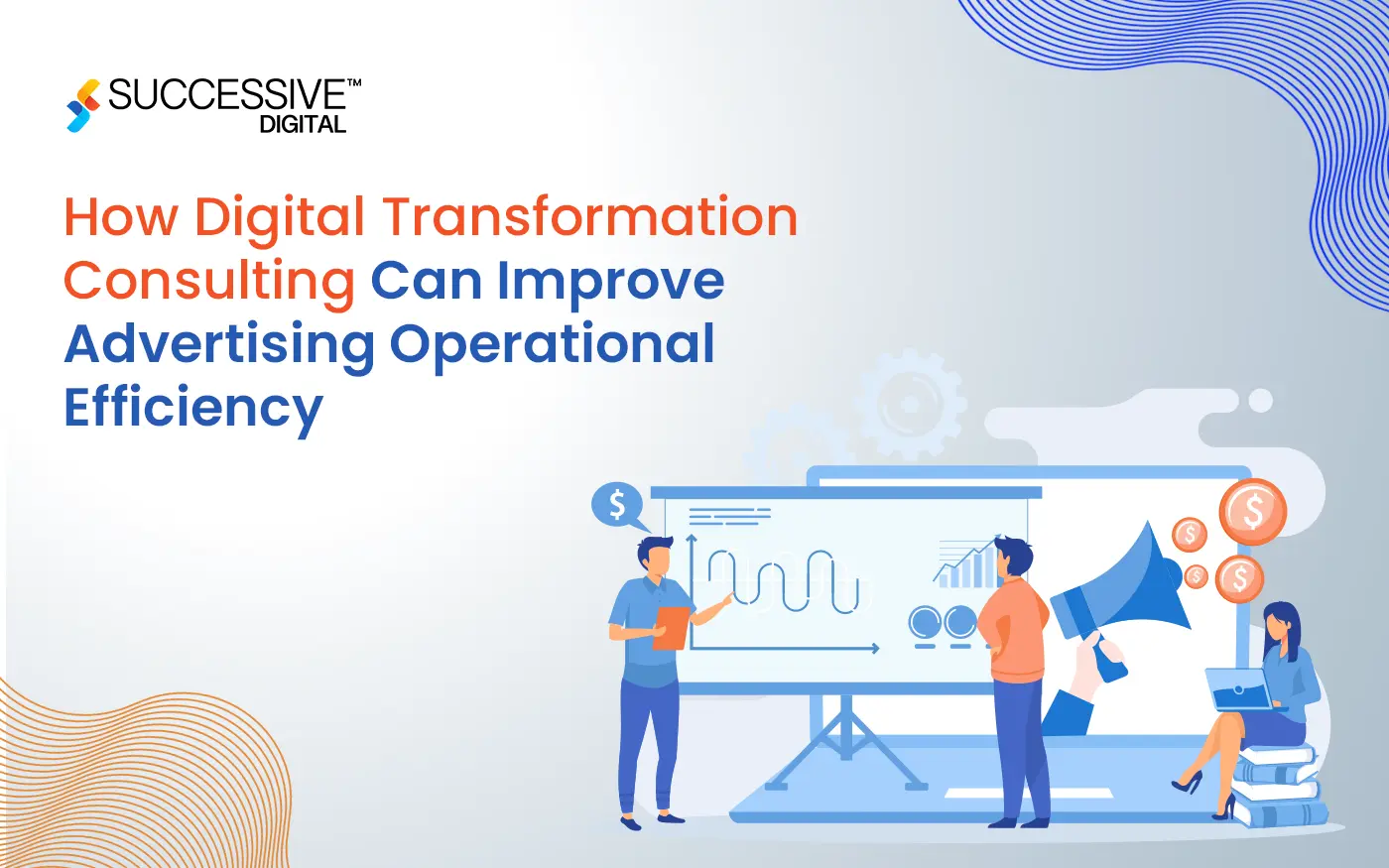The recent years have witnessed unique changes in agriculture dramatically, transforming traditional farming practices. “The Green Revolution 2.0,” has introduced new technologies for agricultural innovation, sustainability, and entrepreneurship. These changes include far-reaching changes in all aspects of the agricultural technology industry, covering distribution, advertising, and marketing strategies. Digital transformation in agriculture reflects a transformational journey towards environmentally friendly green farming practices, including technological advances and commitment to sustainable development.
Integrating the best technologies, including IoT, data analysis, and blockchain, today’s AgriTech empowers farmers to optimize crop management and improve yields and sustainable agricultural practices. Digital technology drives changes in global farming practices in this dynamic and rapidly developing space. This blog explores the impacts of digital technology on the agriculture sector, examines the emerging trends shaping the future of agricultural technology, and identifies ways for large businesses to maintain competitiveness in this emerging market.
Farming in the Digital Age: The Technological Revolution
The impact of technology on agriculture has been profound, revolutionizing traditional farming practices and driving considerable advancements throughout the agricultural practices. One of the digital transformations shift in agriculture is the enhancement of productiveness and performance. Farmers can optimize crop control practices, minimize aid wastage, and maximize yields by adopting digital tools, technology, and precision agriculture applications. Growing adoption of satellite imagery and IOT (Internet of Things) in agriculture offers real-time information and insights that allow farmers to make knowledgeable selections regarding irrigation, fertilization, and pest management, leading to advanced efficiency and productivity.
Moreover, the Green Revolution 2.0 has facilitated the adoption of sustainable farming practices. With the help of data analytics and IoT devices, farmers can screen soil fitness, weather situations, and crop growth styles more accurately. This allows them to implement more appropriate farming strategies that decrease environmental effects, lessen water utilization, and reduce reliance on chemical inputs. Sustainable agriculture practices maintain herbal sources and contribute to the long-term viability of farming operations by retaining soil fertility and biodiversity.
Furthermore, digital transformation in agriculture has been crucial in ensuring meal safety and satisfaction throughout the entire farm to shelf supply chain. The blockchain technology, for example, allows transparent and immutable movement of food along with its distribution, improving traceability and responsibility.
Harvesting Innovation: Emerging Agricultural Technology Trends
Precision Agriculture:
Precision agriculture is a unique approach to agricultural technology that utilizes modern equipment such as GPS, drones, sensors, and data analysis. As a more prominent agricultural technology trend, this approach transforms crop management by giving farmers real-time insights into soil conditions, weather models, and crop health. By accurately tailoring efforts to specific needs in terms of irrigation, crops, and pests, precision farming optimizes the use of valuable resources and increases productivity.
It also enables farmers to make informed choices, predict crop growth, and identify areas for improvement. Moreover, precision farming is green, sustainable, and data-driven for better yield performance.
Vertical Farming and Controlled Environment Agriculture:
This method uses digital technology to provide evolving conditions. The development is optimized, controlled, and developed with light, temperature, humidity, and nutrients. Internet of Things (IoT) sensors, computerized irrigation systems, and real-time monitoring allow for changes and checks as the most suitable and highly productive growing conditions.
The use of digital technology in agriculture and CEA offers the potential to transform agriculture by improving year-round production, reducing animal consumption, and lowering the impact of climate change on crop production.
Robotics and Automation:
Robotics and automation have revolutionized the agricultural industry by providing sophisticated technology with efficiency and precision to handle responsibilities from planting and harvesting to weeding and pest management in real-time information for product quality.
The impact of technology on agriculture is also witnessed through the growing use of robotic arms and machines in the packaging processes, ensuring consistency and leading-edge production resilience. As agriculture embraces robotics and automation, farmers can also ensure industry competitiveness, sustainability, and flexibility to meet the evolving demands of world food production.
IoT and Data Analytics:
IoT and data analytics are essential in AgriTech, providing transformative solutions to better agricultural practices. IoT sensors display real-time soil conditions, weather conditions, and crop suitability, generating valuable data. Advanced analytical algorithms then analyze this information to predict crop yields, optimize irrigation systems, and select capacity information.
Using IoT and data analytics, farmers can make available choices and knowledge, improve animal performance, and increase productivity. This technology integration transforms traditional agricultural methods and delivers a sustainable push to digital agriculture strategy adoption.
Cultivating Customer Experience with Green Revolution 2.0 in AgriTech
Consumer experience in agricultural technology extends beyond the traditional retail concept and encompasses the entire agricultural information system. Farmers, retailers, stores, and consumers all play an essential role in the AgriTech ecosystem, and digital technologies are reshaping their interactions and experiences to the next level.
Digital platforms and tools provide farmers with valuable assets to optimize crop management, increase yields, and reduce the waste of valuable resources. From precise agricultural methods offering the use of drones and satellite models to IoT sensors that help increase crop soil moisture levels in real-time, the impact of technology on healthcare also enables farmers to have access to the latest crop management information at their fingertips, helping them to make better choices and produce more sustainable products.
Distributors and stores gain additional benefits from the digital transformation in agricultural technology, as it allows them to streamline logistics, improve inventory management, increase traceability during distribution, and enhance end-customer experience. For example, by leveraging blockchain technology, stakeholders can tap into the journey of farm goods from farm to kitchen shelf, ensuring higher customer satisfaction and loyal engagement for long-term relationships.
Digital innovation in agricultural technology will also benefit consumers, enabling them to make more informed purchasing choices. Mobile apps and online eCommerce platforms give consumers access to data on farm products’ origin, quality, and environmental characteristics, empowering them to make choices that match their interests and feasibility.
Growth Amidst Green: Strategies for Large AgriTech Enterprises
Large enterprises in the agricultural technology sector can use a wide range of management strategies to effectively address the challenges and opportunities presented by Green Revolution 2.0:
- Research and development (R&D) investment is critical to enabling innovation and staying ahead of the curve. Larger organizations can establish leadership in the rapidly changing agricultural sector by adopting evolving technologies in AgriTech and developing innovative responses to customer preferences. In addition, strategic alliances with start-ups, academic institutions, and various stakeholders can give access to new technologies and market insights, facilitating expansion and accelerating growth.
- Embracing environmentally friendly practices such as organic farming methods and renewable energy can enhance brand reputation, attract environmentally conscious consumers, and increase shareholder profitability.
Digital transformation and technological innovation in AgriTech are the driving forces behind the green revolution 2.0. Advanced technology, including precision farming, vertical farming, robotics, and blockchain, is restructuring agriculture. These innovations are growing productivity, sustainability, and resilience around the arena, tackling complex, demanding situations, including climate change and food safety.












